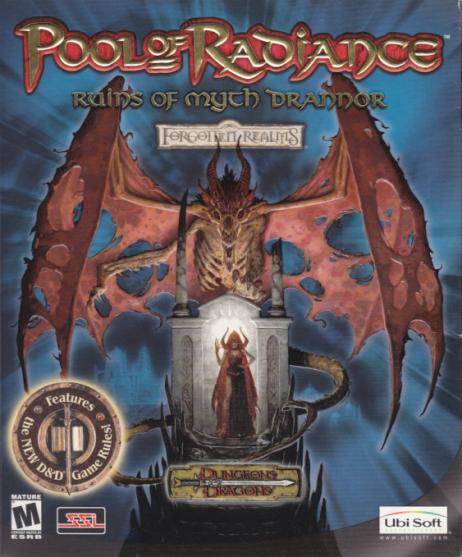Pool of Radiance: Ruins of Myth Drannor Preview
-
Category: PreviewsHits: 9110

Article Index
Page 2 of 2
The many areas of the game have been created in high-resolution 3D, which makes you realize just how far we've come with games when you compare it to the original two-dimensional version of PoR. Both the outside world and dungeon areas in Myth Drannor provide spectacular landscapes to behold and are overrun with plenty of creatures, puzzles, and, of course, treasure. Dungeon delving is one of PoR's strong points, with each level being an enormous network of tunnels, collapsed structures, and hidden rooms. Instead of just moving from one dungeon level to the next, it is not uncommon for one floor to "branch off" into several sub-levels. For example, the main floor of the first dungeon contains exits that lead to several different areas, such as some dwarven crypts and an old dilapitated prison. Because of these vast dungeon areas, PoR's mapping function is an extremely helpful feature, allowing you to zoom in on any explored area, mark important locations with flags, and even view any hidden doors or stairways your party has uncovered previously. For an added level of depth and realism, you're allowed to have brief conversations with some of the creatures you encounter (or simply listen to them plot their next move from behind a closed door) instead of just rushing into battle. These conversations can allow you to avoid combat altogether or even learn information pertaining to your quest... if you say the right things.
Of course, during many encounters, a battle is inevitable. Differing from recent role-playing games, combat in Ruins of Myth Drannor is turn-based, meaning that it offers the player control of each character one at a time. When a battle begins, the game will automatically calculate initiative for each character, as well as each opponent. Initiative is simply a number that determines when each combat participant's turn will fall during each round of battle. The higher the number, the sooner your character gets to perform an action. Once initiative is "rolled" for everyone involved, the game gives you a graphical representation of when each character's turn is coming and when to expect an attack from each opponent. Using this method, the battles tend to be much longer than in other CRPGs, but make for a closer representation to how combat is ran in a real D&D session.
It is not until a battle is over that experience is tallied and treasure is to be had. All characters that are conscious at the end of the battle gain an equal portion of the total experience and are free to loot any gold or items that appear on the battlefield once the opponents' corpses disappear. Typically, after some of the more elaborate battles, there will be additional treasure elsewhere in the room, such as in chest or on a bookshelf. Right-clicking on a chest or similar container brings up a small menu, allowing you to smash it, pick the lock, or other actions, depending on the container and the character who is inspecting it.
Having played through a near-finished version of the game, I can attest to the fact that it will easily provide the 100 hours of gameplay that Stormfront and Ubi-Soft are promising. And it's not just the time investment that makes the game so compelling to me. The thing I probably enjoy most is the fact that your characters begin at first level, restoring an appreciation for character advancement and magical equipment that seems to have been lost in many recent CRPGs. Find yourself a weapon of +2 enchantment in Baldur's Gate II, for instance, and you'll most likely be dropping it on the ground to save room. In PoR, however, you'll be hastily saving your game and deciding which lucky character gets to wield it. It's also nice to be able to utilize as low as 1st level spells again and get maximum effectiveness out of them. Cast a Sleep spell on a group of orcs, for example, and chances are that several of them will be taking a good snooze. Granted, some of the more aggressive players may not enjoy going back to this down-to-earth setting again, but for me it's a welcome return.
Overall, I think Pool of Radiance: Ruins of Myth Drannor has great potential for D&D enthusiasts and CRPG fans alike. It offers thorough exploration of the Moonsea section of Faerun, a unique flavor of combat with its turn-based controls, and a whole new method of character creation and advancement with its basis around the 3rd edition D&D ruleset.


